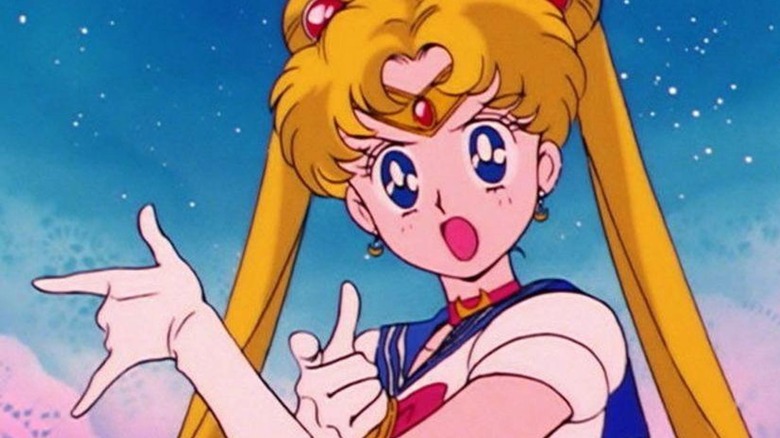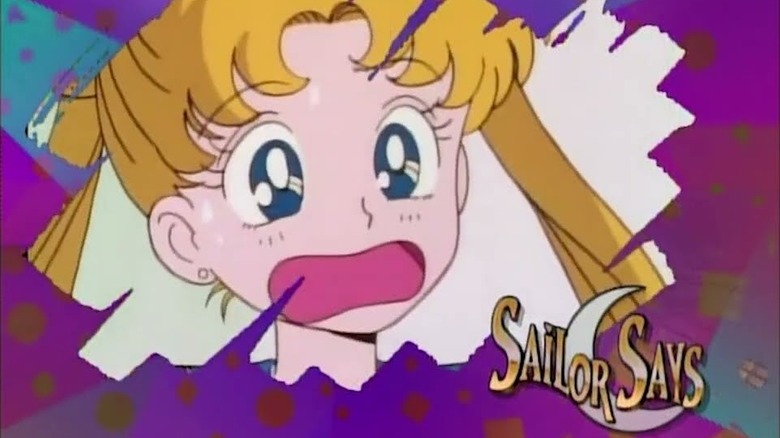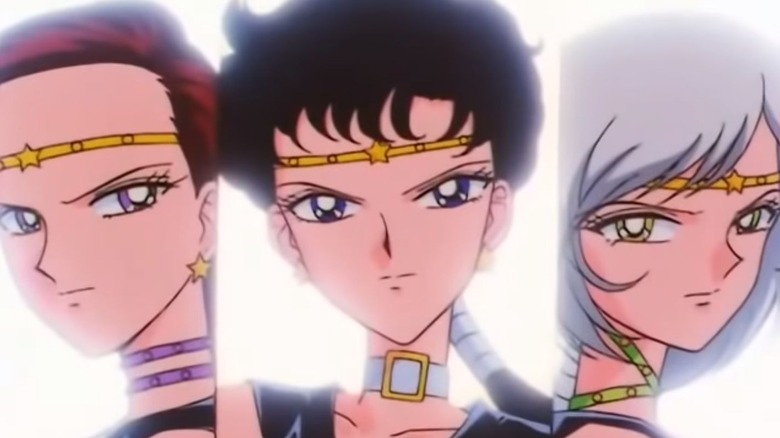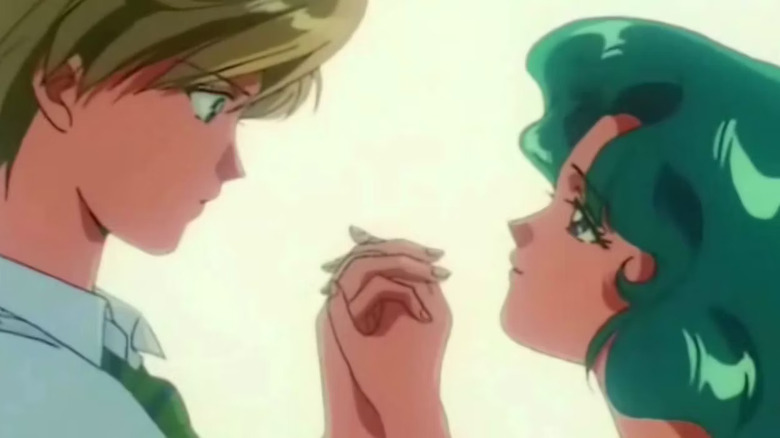Why Cartoon Network's Sailor Moon Censorship Totally Failed (For The Better)
Yahoo! recently announced that Sailor Moon would be returning to Cartoon Network's Adult Swim for Toonami Rewind, a block of programming airing every Friday at 5 p.m. ET starting May 31. But this is not the English dub of "Sailor Moon" that aired on Toonami's original after-school program from 1998 to 2002. Like many young millennials, I was obsessed with the Sailor Scouts and their adventures. Their empowering stories of kicking ass, kissing a handsome prince, and standing up for what's right — all while wearing lip gloss and short skirts — made me believe that girls could do anything. But there was something off about this magical girl anime, something that didn't quite make sense between what I was hearing and seeing.
It turns out that the 1990s English dub from DiC Entertainment and Cloverway completely altered or erased scenes and dialogue to cater to younger American audiences. While there may be a lot of nostalgia for this version, Toonami Rewind is going to be airing the Viz Media English dub, which streamed on Hulu and 2014. This will mark the first time that "Sailor Moon" has been shown uncensored on network TV in the United States. Despite being wildly popular and an introduction to anime for lots of children during the '90s, the "Sailor Moon" that many of us grew up with wasn't the true vision, but one that had been dramatically changed to fit Western norms.
Sailor Moon became an Americanized after-school special
The list of censorship in "Sailor Moon" is long (The Michigan Daily gives a solid overview). One of the biggest changes is the removal of many Japanese cultural references, including pivotal character names. Usagi became Serena, Michiru was changed to Michelle, Mamoru Chiba turned into Darien Shields, and so on. The dub didn't take into account that many fans of the series, like myself, would read the mangas and learn their original names, anyway. Young viewers aren't dumb; we recognized elements such as their sailor school uniforms that indicated the setting was a different country with a different way of life. These changes harmfully suggest that exposure to different nationalities poses a threat or is inherently confusing to children.
Cartoon Network also handled the airing of "Sailor Moon" with kid gloves, changing blood to a strange green color, referring to deaths as mere kidnapping, and removing the outline of (gasp!!) breasts during the transformation scene. They also inserted educational "Sailor Says" segments at the end of each episode which gave moral lectures about issues like recycling or healthy eating.
Since the '90s saw a resurgence in conservative religious politics (anti same-sex marriage, advocating for prayers in public school, and abstinence-only education, etc.) Cartoon Network removed a lot of the Catholic iconography. The Holy Grail was renamed The Purity Chalice and the image of Hotaru hanging from a cross like Jesus was removed. These changes strip away the series' most artistic and bold choices and dilute the narrative stakes and emotional impact. The fate of the universe hangs in the balance for these schoolgirls, and the darkness they face — even death — is meant to be grim, which heightens the excitement.
Gender non-conforming characters from Sailor Moon were erased
Some of the most egregious changes involve the queer characters. During the '90s, there was certainly some progress in accepting the queer community; this was the decade that saw the popularity of "Will & Grace," and embraced Ellen DeGeneres' coming out. But there were also injustices such as the murder of Matthew Shepard and the "Don't Ask, Don't Tell" mandate which required LGBTQ individuals to hide their sexual orientations in order to serve in the United States military.
If adults couldn't handle the idea that queer people exist, they certainly weren't going to allow it on their children's television screens. So, the American version of "Sailor Moon" changed the villain Zoisite from male to female because he was depicted in a romantic relationship with another male villain, Kunzite. There are numerous scenes of them holding one another in amorous poses, surrounded by falling rose petals. Cartoon Network also changed another villain, Fish Eye, originally written as a gay man who prefers dressing in feminine clothing. By casting cis women to voice these long-haired characters, the network was easily able to hide their true identity and let them pass as cisgender and heterosexual.
But this would be impossible to avoid in the final season of "Sailor Moon." Although no official reason has been given, many fans theorize it is because the Sailor Starlights are male as humans and transform into female Sailor Scouts. There would be no way for the network to skirt around their gender non-conforming identity, so they just avoided the characters altogether by not dubbing the final season. The only way to get the full trajectory of Sailor Moon's story was to read the mangas, find a way to watch in original Japanese, or wait until the Viz Media dub on Hulu.
Sailor Uranus and Sailor Neptune turned from girlfriends to cousins
Sailor Uranus and Sailor Neptune's relationship takes the cake for the most absurd censorship. There are countless shots of them exchanging meaningful looks while holding hands, walking arm-in-arm, or standing closely in intimate poses against sappy music. They behave in the same way that a typical couple would, supporting one another, spending time together, and showing public affection. Their bond is so strong that the animation often transforms into romantic watercolor paintings when they're together. There's even a scene where Sailor Neptune reminisces about her first kiss, and you can clearly see it's Sailor Uranus but they just say it's a random guy named Brad.
To quote Angelina from "Jersey Shore," um . . . HELLO? I may have only been 5 or 6 years old when I first started watching "Sailor Moon," but it was pretty obvious that despite constantly referring to each other as cousins, Sailor Neptune and Sailor Uranus' attachment was romantic and not familial. What made these weird, incest-y vibes more appropriate for children than an actual queer relationship? My big reaction when I eventually read the mangas and understood the true nature of their relationship? Okay, great. Two girls love each other. Moving on. Children are far more understanding and empathetic than whatever ridiculous political or social biases adults have. It's both funny and sad how hard Cartoon Network tried to pull the wool over younger viewers' eyes by repeatedly insisting that they are cousins when the queer-coded framing and their tender interactions said otherwise.



